We all know that Paris is fabulous, but how does it stay fabulous in this era of economic turmoil, rampant real estate speculation, and cutthroat politics? One answer is that Paris has hung onto its vibrant retail and restaurant scene, and therefore its energetic street life. And far from destroying that scene with massive, invasive towers, new development (the much-reviled Tour Montparnasse aside) often employs innovative techniques derived from Paris’s architectural heritage. A captivating current example is Beaupassage—a food, art, greenery, and wellness passage of restaurants, pâtissiers, and shops that opened in the 7th arrondissement last year.
The 7th—home to the Musées d’Orsay, Rodin, Maillol and many other landmarks—is, of course, utterly prime property. Yet instead of leveling the site—which included a 17th-century convent, a Renault garage, and miscellaneous industrial buildings—developer Emerige chose to save as much as possible, while reconfiguring what was there to produce an entirely new, mixed-use project that hosts 14 commercial spaces at street level and 59 apartments above, including 10 government-subsidized units. The underground floors were reconstructed into a receiving center, eliminating any need for delivery trucks to enter and preserving the serenity of a 100% pedestrian retreat.
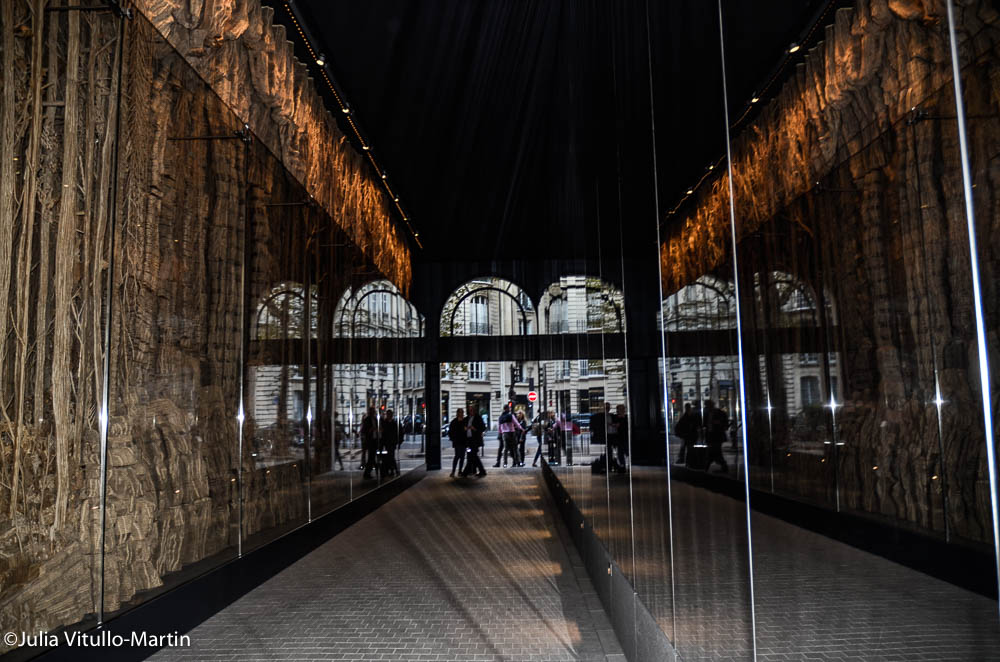 Sculptor Eva Jospin’s La Traversée, composed of cardboard, branches, roots, and twigs, links Beaupassage to the Boulevard Raspail.
Sculptor Eva Jospin’s La Traversée, composed of cardboard, branches, roots, and twigs, links Beaupassage to the Boulevard Raspail.
Beaupassage, which connects the Rues de Grenelle et Bac with the Boulevard Raspail, builds on a Parisian practice of street-linking passages that dates at least to the 15th century, and perhaps earlier. Given its historic density and complexity, Paris has probably always had some form of passage efficiently lined with businesses, but the practice became wildly popular in the 19th century, when some 240 passages were developed. Quite a few were covered, which Beaupassage is not. Today, Paris has only 20 or so left, but Beaupassage’s success may inspire a comeback.
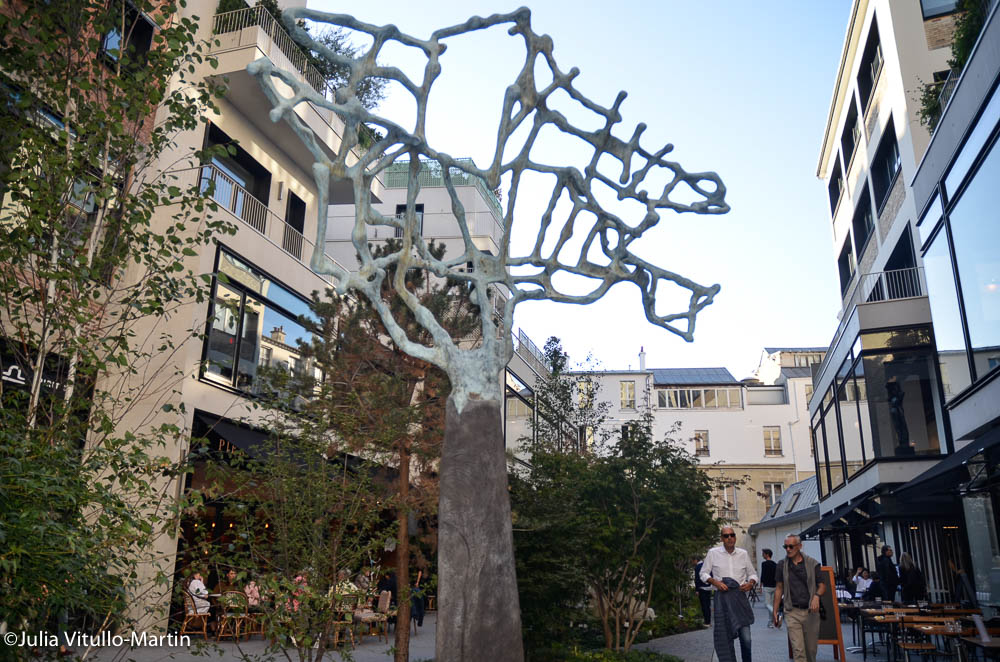 Marc Vellay’s ideas behind L’Arbre Neuronal combine humanity’s recent advances in neuroscience with ancient concerns of good and evil.
Marc Vellay’s ideas behind L’Arbre Neuronal combine humanity’s recent advances in neuroscience with ancient concerns of good and evil.
In naming his real estate company Emerige, chairman Laurent Dumas invented a word he says means “building for the love of it.” With Beaupassage he sought art that would reflect Beaupassage’s intent and fit into a specific relationship with the scale of the buildings. L’Arbre Neuronal, for example, shows a tree trunk capped with what artist Marc Vellay calls a neuronal head of hair flowing with constant energy and is poised elegantly between the low-rise buildings. Project architects Franklin Azzi and Frédéric Bourstin drew inspiration from old and new, and incorporated as many materials as possible from the old site, such as limestone, brick, cement, iron, and glass.
Beaupassage’s roster of superstar Parisians includes Yannick Alléno’s glamorous, hard-edged L’Allénothèque restaurant and wine cellar; Alexandre Polmard’s butcher shop and bistro, called “la belle boucherie de Beaupassage” by Figaro; Thierry Marx’s bakery, where he sells a baguette named “La Loyale” for loyalty to suppliers, clients, and coworkers; Pierre Hermé, which Michelin calls the pope of pastry; Fromagerie Barthélémy, Paris’s most renowned cheesemaker, has opened in one corner; and Junichi Yamaguchi’s hyper-chic specialty coffee bar % Arabica sits at the other end.
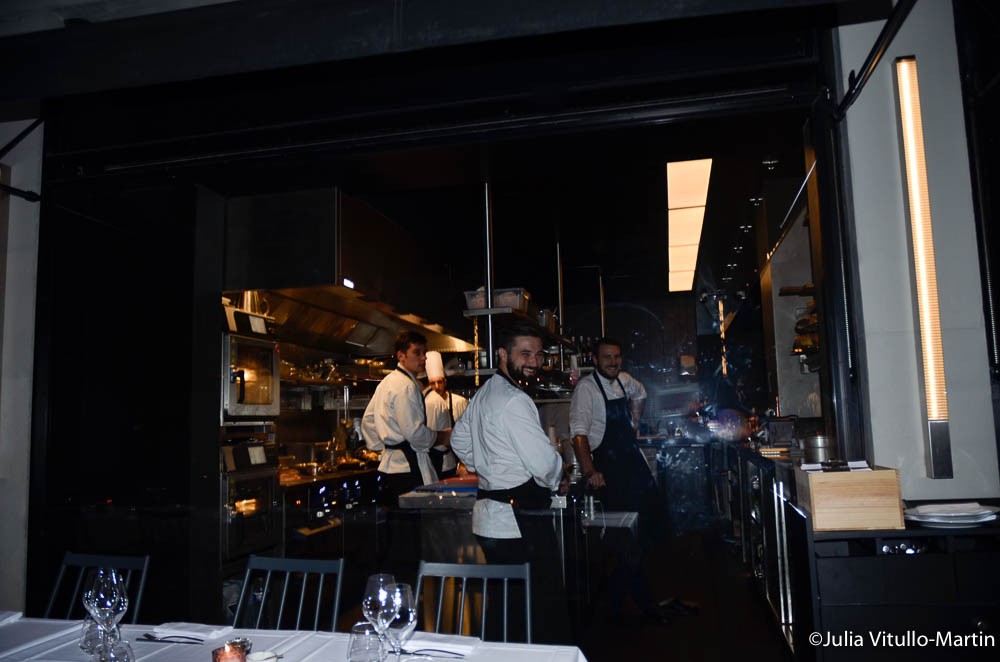 Yannick Alléno’s glamorous, hard-edged L’Allénothèque has what Bonjour Paris calls a “sexy, black, open kitchen.”
Yannick Alléno’s glamorous, hard-edged L’Allénothèque has what Bonjour Paris calls a “sexy, black, open kitchen.”
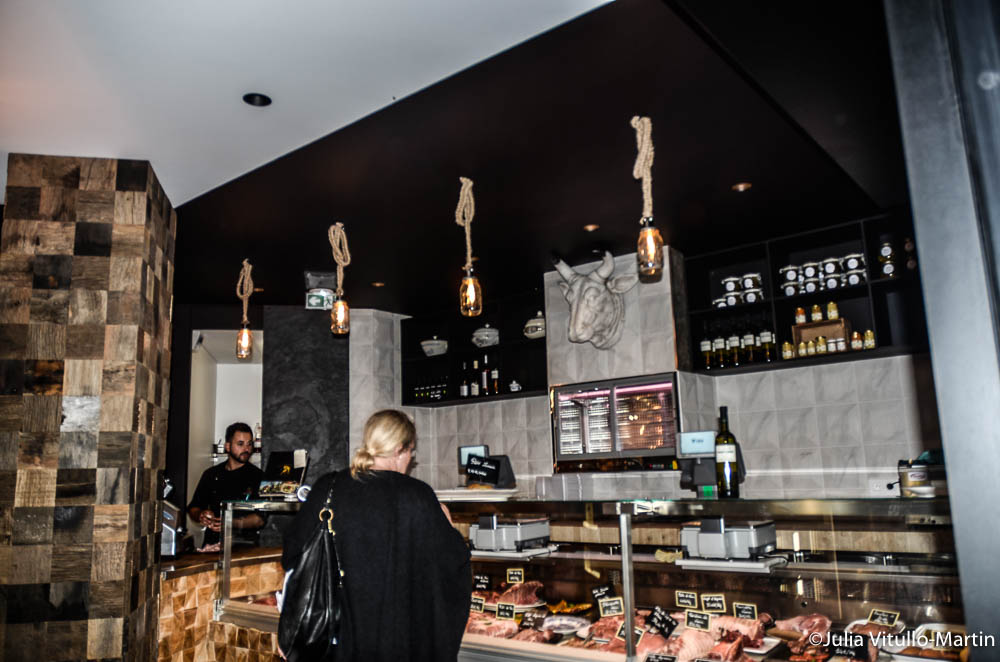 Polmard, who is said to sell the world’s most expensive meat, runs a two-story butcher shop and restaurant.
Polmard, who is said to sell the world’s most expensive meat, runs a two-story butcher shop and restaurant.
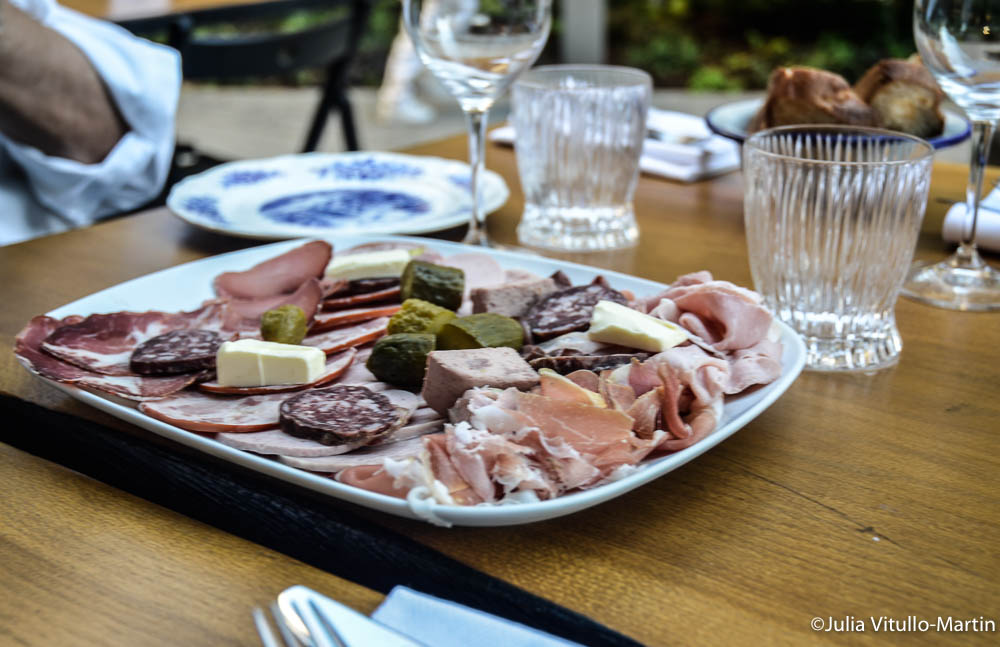 Served with Polmard’s excellent bread and reasonably priced wine, his charcuterie plate feeds two for dinner.
Served with Polmard’s excellent bread and reasonably priced wine, his charcuterie plate feeds two for dinner.
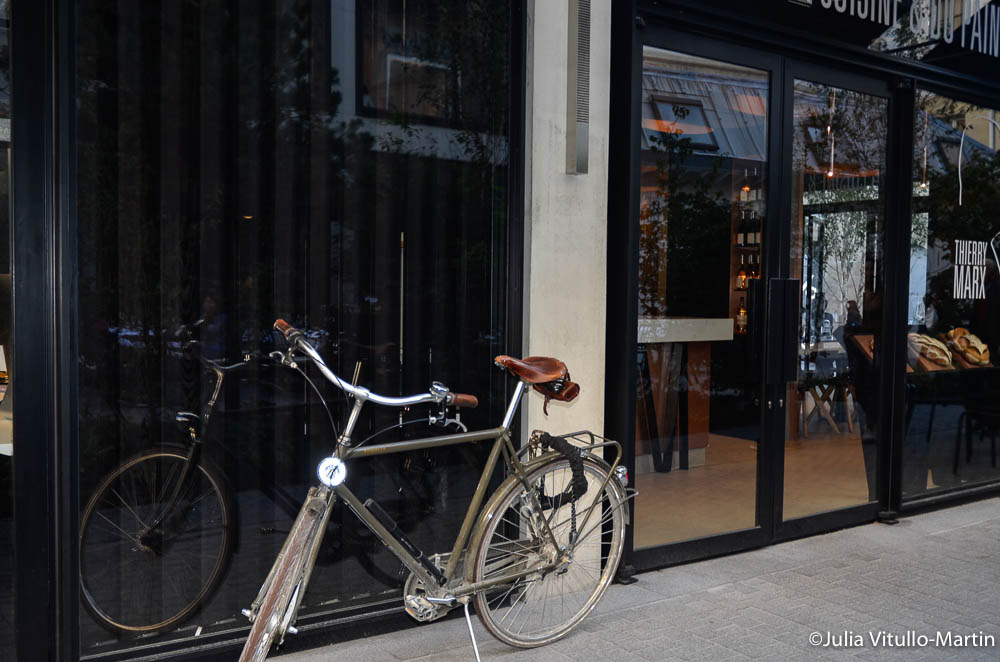 At Thierry Marx even the bikes are chic.
At Thierry Marx even the bikes are chic.
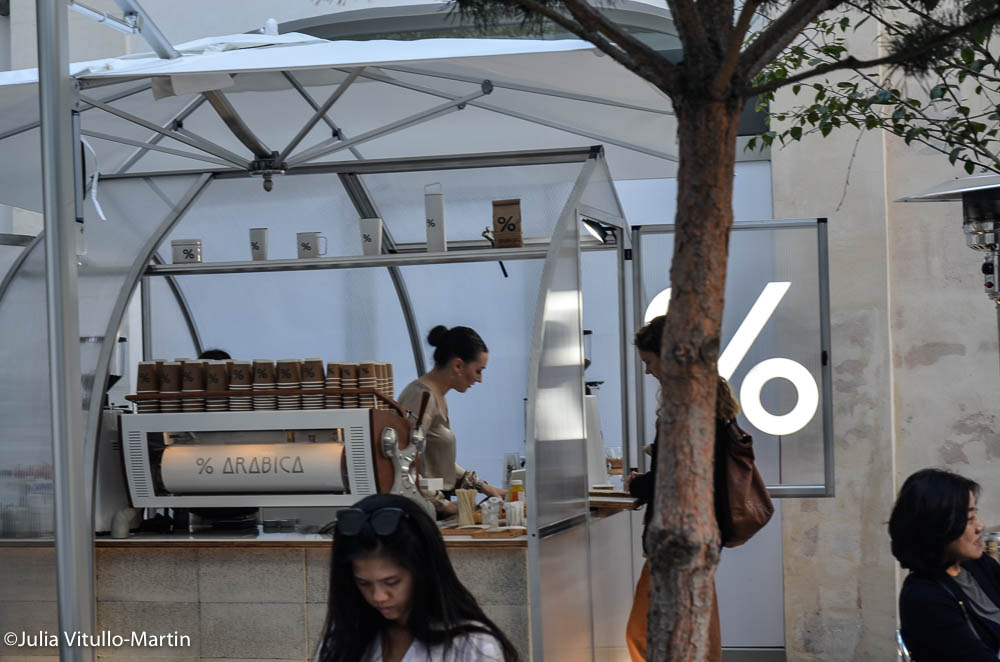 % Arabica, treasured for its chic and its superb latte, is a leader in the Third Wave coffee movement.
% Arabica, treasured for its chic and its superb latte, is a leader in the Third Wave coffee movement.
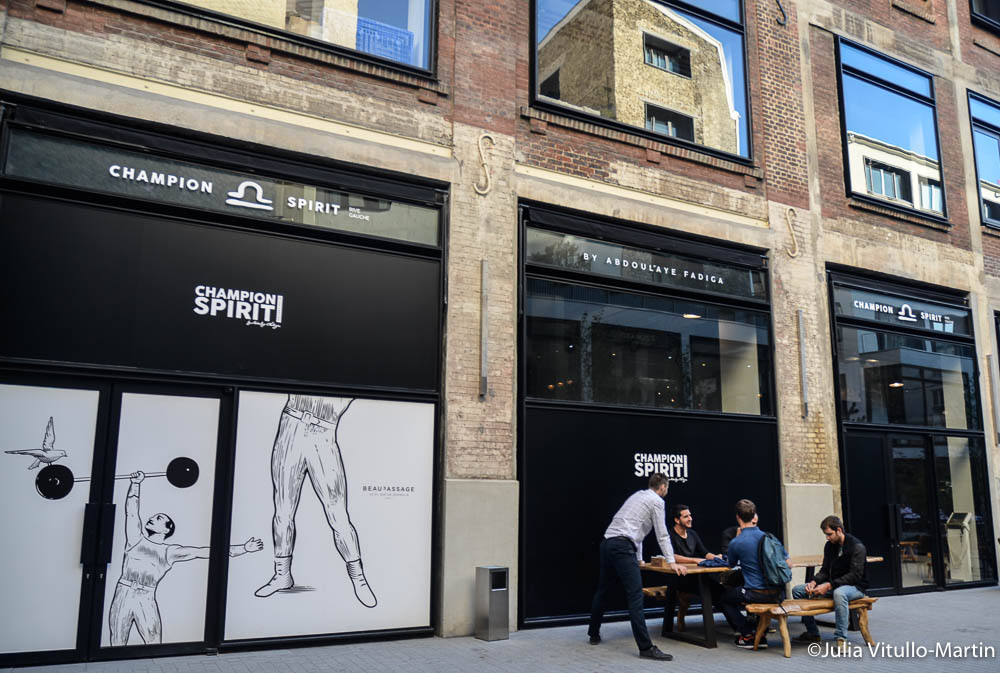 And when you’re finished eating and strolling you can work out with world-class trainer Abdoulaye Fadiga at Champion Spirit Rive Gauche.
And when you’re finished eating and strolling you can work out with world-class trainer Abdoulaye Fadiga at Champion Spirit Rive Gauche.
How to Find Beaupassage
Entrances @ 75007 Paris
- 53-57 rue de Grenelle
- 83-85 rue du Bac
- 14 boulevard Raspail
Getting here
- M12 rue du Bac
- M10 12 Sèvres-Babylone
- M4 Saint-Germain-des-Prés
Opening hours: Every day, 7am to midnight
Julia Vitullo-Martin is a Senior Fellow at Regional Plan Association. Get in touch with her @JuliaManhattan.






